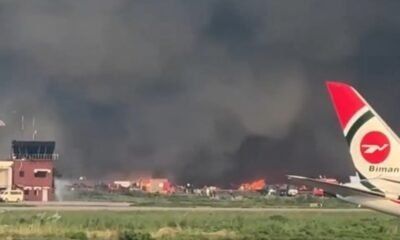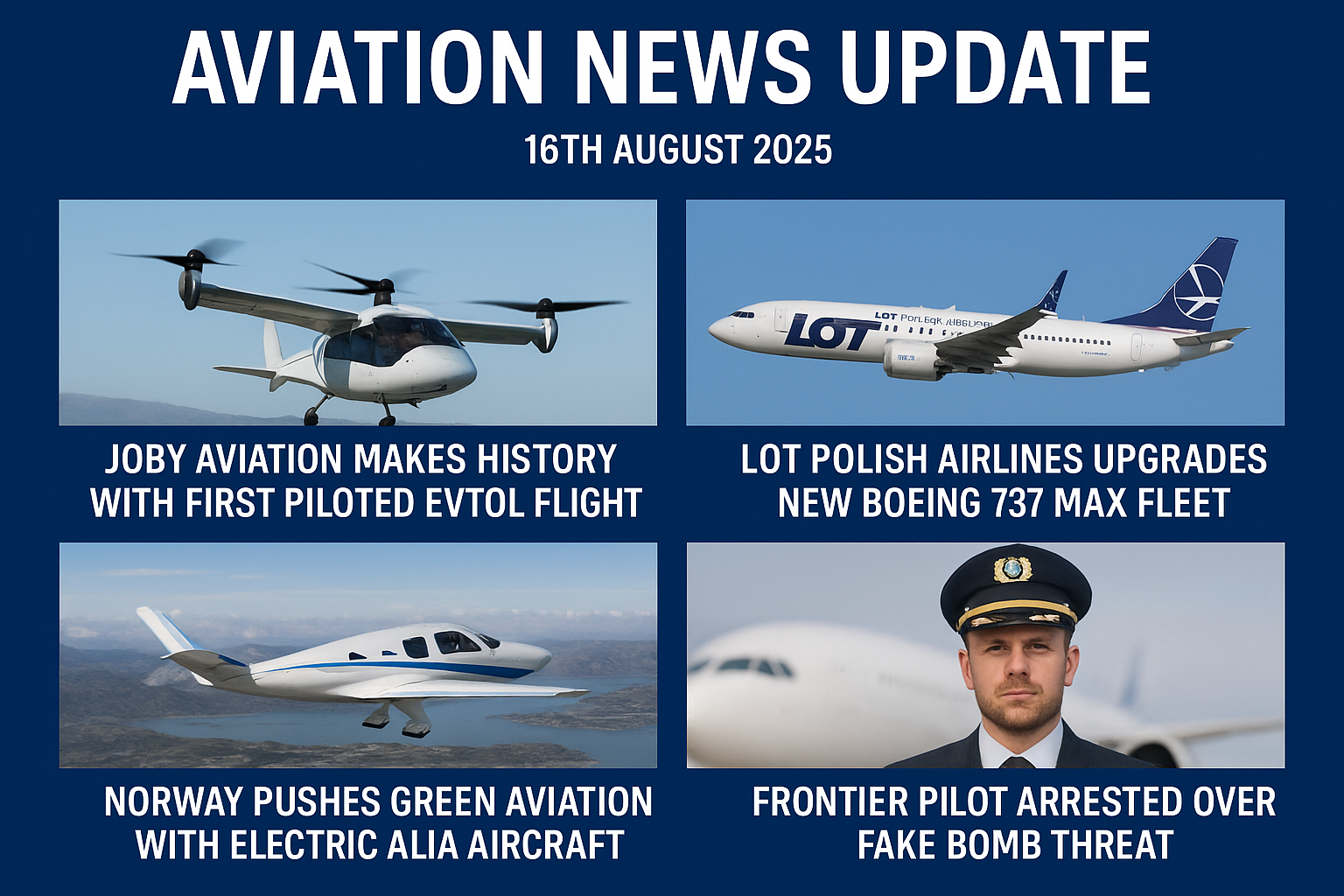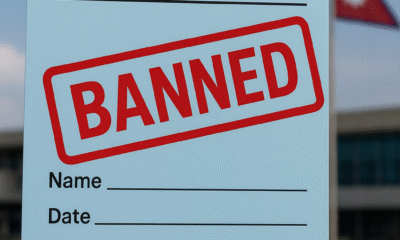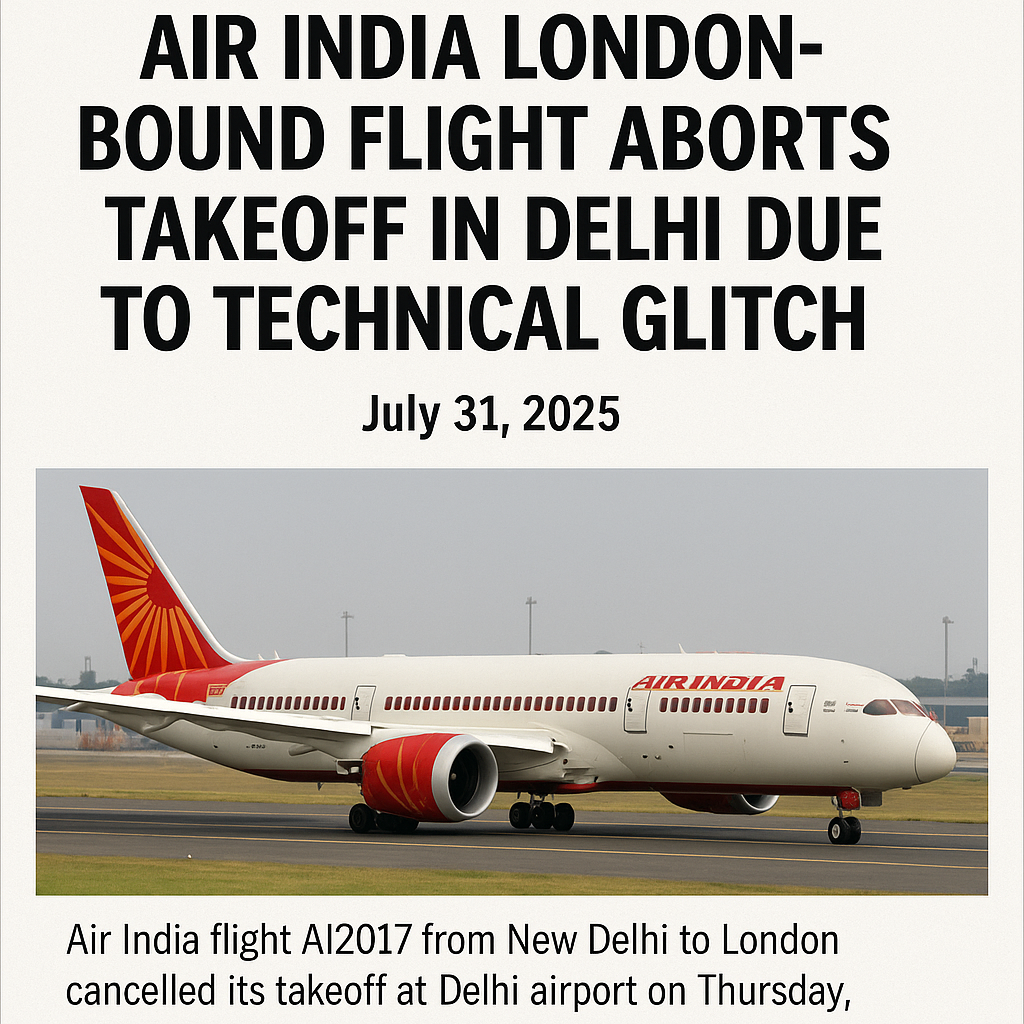AVIATION
Aircraft Painting: What is it, Why is it done, and How?
Much like an artist seals the ending of his masterpiece with a final brushstroke, an aircraft, after its fantastic painting techniques and specialized coatings, also needs its final touches.
Published
2 years agoon
By
Gems Sierra
Icelandair boasts the painting of the northern lights- a phenomenon that brilliantly lights up the skies in this volcanic country. The German Airship “Hindenburg” had a picture of Swastika painted on it. We even have a broad brush term for the whole corpus of graphics, color, and geographical/typographical identifiers that are so beautifully daubed on an aircraft: “aircraft livery.” But why is aircraft painting really done?
It might not be common knowledge, but aircraft painting has a role to play in aviation maintenance and operations, ranging from protecting the aircraft’s exterior to enhancing its visibility and identification; aircraft paint has a whole host of functions.
There are the obvious bits as to why aircraft are painted: Qatar Airways, which once had a deal with Barcelona Football Club, was painted in Barcelona’s colors. Air New Zealand was immersed in the colors of Lord of the Rings- the movie that won so many Oscars and was shot in New Zealand. Apart from the marketing gimmicks and pushing the limits of creativity and imagination, the aircraft painting process has a lot to offer. Let’s delve into its ABCs.

Some Interesting Facts about Aircraft Painting
- Painting an aircraft can cost somewhere between US$100,000 – US$200,000.
- A British Airlines aircraft took 950 person-hours to get repainted. And this effort was orchestrated by a 10-person team.
- It once took US$1.2 Million to repaint an aircraft operated by the Royal Air Force.
- Large aircraft such as Airbus A380 can consume as much as 500 liters of paint.
- Aircraft can have reflective finishes that tend to keep the insides of the aircraft cooler.

Why paint an aircraft anyway?
Protecting the Exterior
An aircraft is an expensive machine. A significant portion of the cost of manufacturing an aircraft goes to the construction of the body. As an aircraft’s surface is large, it is subject to a lot of corrosive elements such as moisture, salt, and chemicals. These can have debilitating impacts on the structural integrity of the aircraft. And with time, these forces only multiply.
Painting safeguards the aircraft’s structure from corrosion and weather damage acting as a protective barrier that shields the agents of corrosion. Aircraft are known to be painted with specialized coatings such as the ones possessing qualities of anti-corrosion to ensure longevity.
Enhancing Visibility and Identification
Then there’s the point of standing out. The unique colors with which each aircraft is painted also make the identification of specific aircraft within a fleet easier. Additionally, putting on colors that have high contrast, often punctuated with bold markings, improves the aircraft’s visibility during flight operations. Traffic controllers and ground crew alike can identify these aircraft easily.
Facilitating Maintenance and Inspection
Applications of certain texture or color variations to specific areas have the potential to identify damage and cracks or make the visibility of dents more pronounced. This ensures that timely repairs take place and the aircraft’s airworthiness is easily inspected. Painted surfaces are easier to inspect for signs of wear, tear, or structural issues during routine maintenance checks.

The Painting Process: How Aircraft are painted?
There are almost five steps involved in painting an aircraft. If a new aircraft is involved, the process first requires surface preparation (older ones need to be stripped off the previous paint) and culminates in providing the finishing touches.
Surface Preparation
There are some essentials that need to be done before an aircraft is painted. This involves a thorough cleaning, sanding, and stripping of the aircraft and makes sure that the paint adheres well to the surface. Any existing paint layers, dirt, or contaminants are all deterrents to the adhesion of new paint. Some of the common methods of surface preparation include chemical treatments, such as acid etching or phosphoric acid conversion coating, which makes way for a pristine surface that is ready to be painted.
Primer Application
Only after cleansing the surface begins the application of primers- something which acts as a bonding agent between the aircraft’s surface and the layers of paint that are to follow. In addition to the making of smooth and uniform surfaces, primer also facilitates a better adhesion of the paint and also improves durability. Based on the aircraft’s materials and requirements, epoxy and polyurethane primers, amongst others, are used.
Paint Application Techniques
Numerous methods can be used for the application of paint in aircraft. Spray guns, which allow for precise control and even distribution of paint, are the most popular choice of them all. A viable alternative to this is Electrostatic painting– a technique where an electrical charge is used to attract paint particles to the aircraft’s surface, resulting in a more uniform and efficient application. The third type of coating would include powder coating- a form of aircraft painting where solvents are not released into the environment, making it a more environment-friendly.
Specialized Coatings
Beyond conventional paints and painting methods such as electrostatic painting or powder coating, specialized coatings are also used in aircraft. This helps to address specific needs. Anti-corrosion coatings, for example, are applied to protect against corrosion caused by exposure that is not limited to moisture, salt, or chemicals.
In the same way, heat-resistant coatings are used on areas subjected to high-temperature environments, such as engine components. Additionally, radar-absorbing materials, which are specifically designed to tone down an aircraft’s radar signature, are used to level up an aircraft’s safety.
Finishing Touches and Sealants
Much like an artist seals the ending of his masterpiece with a final brushstroke, an aircraft, after its fantastic painting techniques and specialized coatings, also needs its final touches.
Finishing touches are about, but not limited to, an aircraft’s appearance and branding. A glossy finish, in addition to making an aircraft eye-catching, also protects the underlying paint layers from fading.The finishing touches also keep away UV radiation and environmental damage. The pièce de résistance to the paintings might be the decals, insignias, and logos representing the airline or operators that mark their unique identity.
They are applied to. Sealants,which protect painted surfaces from environmental factors such as moisture, chemicals, and pollutants, act as a barrier, preventing damage and extending the lifespan of the paint. They also deter abrasion and fading and prolong the vibrancy of the aircraft for longer periods.

Types of Paint
Epoxy
Epoxy is one of the polyurethane paints, which can be made by the reaction of a hardener and a resin that holds on pretty well to the surface of an aircraft. Their high heat, coupled with good electrical insulation, is why Epoxy is sought after in high-altitude aircraft.
As Epoxy doesn’t dry as hard as enamel, the probability of it chipping or breaking over time is virtually non-existent. Their exceptional bond strength allows them not to fade, oxidize, or become brittle.
Enamel
If you are looking to cut the cost of painting an aircraft, enamel painting is the way to go. Enamel is particularly known for toughness, and with this daubed-on, an aircraft can handle the most inclement of circumstances.
Epoxy paints are known to be rife with volatile organic compounds that have been proven to jeopardize the lives of painters or any people who inhale these.
A third option?
The third and final option is the amalgamation of these two types of paints. A combination of enamel paint used for the plane’s design and color coupled with the Epoxy paint for the varnishing and shine might be the way to go. When you’ve got the enamel and epoxy blend in this way, artistry and fortitude walk hand in hand.

Safety and Regulatory Considerations for Aircraft Paints
Much like the machinery and parts of an aircraft is heavily regulated by the governing bodies, the same is the case for aircraft paint.
Aviation Standards and Regulations
The Federal Aviation Administration (FAA) and the International Civil Aviation Organization (ICAO) are two of the larger bodies that provide a basic framework of how aircraft painting works. These guidelines cover a wide spectrum of aspects that include the paint materials and application techniques that fall within the remits of industry standards.
Some Interesting Facts about FAA’s Mandate on Aircraft Painting
- Color Contrast Requirements ensure that the markings are easily distinguishable and legible, even from a distance or under varying lighting conditions. Contrast ratios and size specifications are defined by the FAA to ensure optimal visibility and identification.
- The FAA requires aircraft to be equipped with fire-resistant paint systems in certain areas, particularly around engines and fuel tanks. These are designed to marring the spread of fire in case of an incident.
Environmental Concerns and Emissions
While we might be awed by some staggering shades of paint in aircraft, we mustn’t be a blind eye to their potential environmental impact. Traditional painting processes are notorious for the production of volatile organic compounds (VOCs) that contribute to air pollution. The seepage of these paints beneath the ground is also hazardous to the soil.
In recent times, the use of low-VOC paints which are dictated by the lower concentrations of volatile organic compounds, has come into vogue. The shedding of light on the fact that high concentrations of VOCs can damage the nervous system and kidneys have resulted in this change to more environmentally-friendly paint. Water-based paints and improved waste management strategies are some other ways to mitigate these effects.
Airbus also revealed a new paint booth which operated with minimum energy and cut down on CO2 emissions at the same time.
Recent Innovations and Trends
Scientific advancements have trickled down to the areas of aircraft painting as well. Let’s take a look at a few of them.
Advanced Paint Systems
Continuous innovation in paints and colors has led to Advanced paint systems that have higher durability, flexibility, and lower environmental footprint. Self-healing coatings, which are capable of repairing minor scratches automatically., have emerged. These paints have cut across maintenance requirements and frequent repainting- all of which have prolonged the lifespan of the paint.
Customization and Artistic Expressions
In recent years, there has been a rapid shift towards customization and artistic expression. Aircraft owners and operators now seek unique paint jobs, personalized liveries, and creative designs. These are aimed at creating a distinctive visual identity and generating brand recognition. There is an ever-growing expanse of artistic expressions on aircraft ranging from vibrant colors and intricate designs-some of which can be facilitated by AI designing- to showcasing cultural heritage or supporting social causes.
Conclusion
Aircraft painting is a critical process for ensuring the longevity of the aircraft as well as for promoting the various brands or airlines that a specific aircraft is tied to, not to forget its visibility and identification. But at all times, adherence to aviation standards and regulations is a must. Aircraft painting continues to evolve. With aircraft getting more and more affordable, there may be artists who want to take artistic expressions in aircraft painting that are not limited to 3-D art!! Who knows? Despite all the thrills and frills associated with it, aircraft painting will remain an essential practice in maintaining the integrity, aesthetics, and safety of aircraft worldwide.
Written by Karan Bhatta
Photo Credits:
Michael Jasmund
mentourpilot.com
www.ainonline.com
aeroreport.de
www.spraysystems.com
You may like
-


Massive Fire Erupts at Dhaka’s Hazrat Shahjalal International Airport — Flight Operations Suspended
-


Nepal Airlines’ Guangzhou Flight Postponed: Mismanagement or Diplomatic Delay
-


Boeing Regains FAA Self-Certification Rights, Airlines Eye New Connectivity Upgrades
-


Aviation News Update – 16th August 2025
-


Visitors’ Pass Banned at Tribhuvan International Airport
-


Air India London‑bound Flight AI2017 Aborts Takeoff in Delhi Due to Technical Glitch (July 31, 2025)
